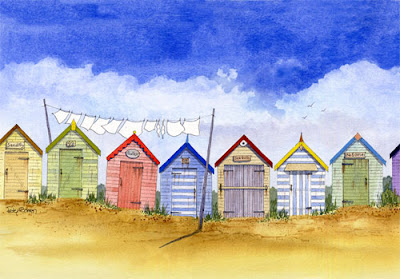Discover Nature's Design, Form and Function
Looking at nature is a wonderful experience. Just take a walk in any country garden and you will discover some amazing designs and complex patterns that mother nature has created.

Resently we visited Waterperry Gardens - eight acres of landscaped ornamental gardens, that are guaranteed to delight and inspire garden-lovers and artists from across the country and the world.
Founded more than seventy years ago as a School of Horticulture for Ladies, the gardens at Waterperry have evolved into a stunning oasis of calm and beauty in the heart of the Oxfordshire countryside.

It's not until you stop to smell the roses that you realize how complex the very nature of flowering plants are, and how wonderous they can be with their own unique methods of attracting insects (and us) to them.

Nature can accomplish feats that engineers have only been able to dream of until now. But as scientists peer deeper into the cellular and molecular workings of nature, engineers are starting to find information they can apply to everything from advanced optics to robotics—even a mussel-inspired glue that could one day be used to repair shattered bones. The result is a new field called biomimicry, or biologically inspired design. And though nature's innovations often need radical adaptation to suit human purposes, the new approach has the potential to improve the way we do everything, from desalinating water to streamlining cars.
 In fact, nature turns out to be an enormous wellspring of ideas. Jewel beetles, which lay their eggs in freshly burned trees, can detect fires from miles away; the defense industry is studying the beetles for clues to designing new low-cost, military-grade infrared detectors. Meanwhile, Volvo is tapping locusts' famed ability to fly in dense swarms without colliding for a possible key to anti-collision devices in cars. NASA-supported researchers at Princeton are analyzing the remarkable strength of abalone shells to help make impact-resistant coatings for thermal tiles.
In fact, nature turns out to be an enormous wellspring of ideas. Jewel beetles, which lay their eggs in freshly burned trees, can detect fires from miles away; the defense industry is studying the beetles for clues to designing new low-cost, military-grade infrared detectors. Meanwhile, Volvo is tapping locusts' famed ability to fly in dense swarms without colliding for a possible key to anti-collision devices in cars. NASA-supported researchers at Princeton are analyzing the remarkable strength of abalone shells to help make impact-resistant coatings for thermal tiles.
Even everyday devices may benefit from nature-inspired improvements.

Resently we visited Waterperry Gardens - eight acres of landscaped ornamental gardens, that are guaranteed to delight and inspire garden-lovers and artists from across the country and the world.
Founded more than seventy years ago as a School of Horticulture for Ladies, the gardens at Waterperry have evolved into a stunning oasis of calm and beauty in the heart of the Oxfordshire countryside.

It's not until you stop to smell the roses that you realize how complex the very nature of flowering plants are, and how wonderous they can be with their own unique methods of attracting insects (and us) to them.

Nature can accomplish feats that engineers have only been able to dream of until now. But as scientists peer deeper into the cellular and molecular workings of nature, engineers are starting to find information they can apply to everything from advanced optics to robotics—even a mussel-inspired glue that could one day be used to repair shattered bones. The result is a new field called biomimicry, or biologically inspired design. And though nature's innovations often need radical adaptation to suit human purposes, the new approach has the potential to improve the way we do everything, from desalinating water to streamlining cars.
 In fact, nature turns out to be an enormous wellspring of ideas. Jewel beetles, which lay their eggs in freshly burned trees, can detect fires from miles away; the defense industry is studying the beetles for clues to designing new low-cost, military-grade infrared detectors. Meanwhile, Volvo is tapping locusts' famed ability to fly in dense swarms without colliding for a possible key to anti-collision devices in cars. NASA-supported researchers at Princeton are analyzing the remarkable strength of abalone shells to help make impact-resistant coatings for thermal tiles.
In fact, nature turns out to be an enormous wellspring of ideas. Jewel beetles, which lay their eggs in freshly burned trees, can detect fires from miles away; the defense industry is studying the beetles for clues to designing new low-cost, military-grade infrared detectors. Meanwhile, Volvo is tapping locusts' famed ability to fly in dense swarms without colliding for a possible key to anti-collision devices in cars. NASA-supported researchers at Princeton are analyzing the remarkable strength of abalone shells to help make impact-resistant coatings for thermal tiles.Even everyday devices may benefit from nature-inspired improvements.



Comments